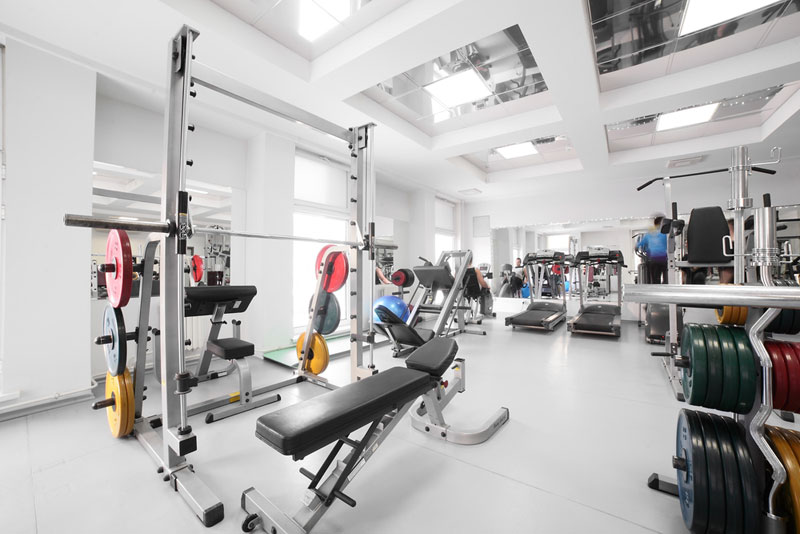3 Great Back Exercises You Can Do at the Gym


There are many ways to work your back muscles at the gym, but some might leave you injured.
To prevent injury when exercising your back, experts recommend choosing exercises that keep the spine in a so-called "neutral" position — one that preserves the natural curves of the spine, rather than bending the spine.
We've already reviewed some of the best exercises for your back that don't require any equipment. But if you have access to some workout equipment, the following exercises are also good for working many of the muscles in the back:
Standing rubber tube row:
- Anchor a rubber tubing resistance band to something sturdy, like a pole or the inside of a door jamb, or have a partner hold one end.
- Hold on to the resistance band with one hand, with your arm straight out in front of you, and with your palm facing down.
- Pull the band toward you as if you were rowing, bringing your hand toward your shoulder.
- Do 10 to 20 repetitions for each arm.
This exercise may help increase bone mineral density in the thoracic section of the spine, which is the part of the spine in the upper and middle back, said said Michael Bracko, a sports physiologist based in Calgary, Alberta. During this exercise, muscles in the shoulder blade will pull on tendons attached to the thoracic vertebrate, and this stress (caused by tendons pulling on bone) is what can increase bone mineral density, Bracko said.
When working with rubber tubing, you should inspect it first to make sure there are no cracks or rips in it, which could cause it to snap during the exercise, Bracko said. Make sure the tubing is anchored well so that it doesn't come off during the exercise.
Stir the pot
Get the world’s most fascinating discoveries delivered straight to your inbox.
- Lean forward from a kneeling position, and place your forearms and elbows on a stability ball.
- Form a straight line with your body by placing your toes on the ground behind you. Keep your legs straight, with a wide stance.
- Keep your back in a neutral position.
- Move your forearms in a circular motion to move the ball around, as if you were "stirring" a pot.
- Try not to move your back, neck or hips.
This exercise works the abs (rectus abdominis), the obliques (side muscles) and many of the muscles that stabilize the spine.
Medicine ball chop
- Hold a medicine ball in front of your pelvis, with your elbows bent slightly.
- Stand with your feet slightly wider than shoulder width apart.
- With both hands on the ball, raise the ball up from your pelvis to your shoulder.
- Lower the ball back down again, keeping it straight in front of you.
- Do this as fast as you can, with an up-and-down motion, for 20 to 40 repetitions.
This exercise works the muscles in the front and back of your core, Bracko said. You should pick a ball that is not too heavy for you to hold.
Original article on Live Science.

Rachael is a Live Science contributor, and was a former channel editor and senior writer for Live Science between 2010 and 2022. She has a master's degree in journalism from New York University's Science, Health and Environmental Reporting Program. She also holds a B.S. in molecular biology and an M.S. in biology from the University of California, San Diego. Her work has appeared in Scienceline, The Washington Post and Scientific American.



